A series of measures will be put into motion following a national auto theft summit held in Ottawa on Thursday.
Public Safety Minister Dominic LeBlanc, Justice Minister Arif Virani, Transport Minister Pablo Rodriguez, Industry Minister François-Philippe Champagne, Treasury Board President Anita Anand, along with provincial, territorial, and municipal government officials, industry leaders, and law enforcement representatives attended the summit.
“I’m going to have some news I hope in the next week or two for the RCMP and their partners in the context of international investigations around organized crime in this area with Interpol,” LeBlanc said.
The Government of Canada said transnational organized criminal groups are believed to be involved in the export of stolen vehicles from Canada, however, most vehicle thefts involve lower-level threat groups, with violent street gangs being the most prevalent.
“We’re prepared to invest the money necessary to really deal with what is an increasingly violent and alarming connection to organized crime. We’re also looking at whether we can change standards around automobile manufacturing,” LeBlanc added.
The majority of stolen vehicles exported are destined for Africa and the Middle East. Some stolen vehicles also remain in Canada enabling other crimes to be committed with the vehicles and are destroyed afterwards.
“To the criminals out there, we’re going to disrupt your activities with everything we have. I think they should see us hopefully in our combined efforts, who’s going to disrupt their activity,” Champagne commented.
Measures include:
- Increasing the capacity of the Canada Border Services Agency (CBSA) by investing $28 million to conduct more investigations and examinations of stolen vehicles, as well as enhance collaboration on investigations and intelligence sharing with partners across Canada and internationally. This includes exploring detection technology solutions, and exploring the use of advanced analytical tools, such as artificial intelligence.
- Pursuing all avenues to ban devices used to steal vehicles by copying the wireless signals for remote keyless entry, such as the Flipper Zero, which would allow for the removal of those devices from the Canadian marketplace through collaboration with law enforcement agencies.
- The federal government will establish a means of better information sharing between local police and railway police, including through the use of advanced data tools, to identify and find stolen cars before they get to ports.
- Public Safety Canada, the CBSA and the Royal Canadian Mounted Police (RCMP) will work with partners across Canada and internationally to increase collaboration and information sharing.
- Transport Canada will modernize the Canadian Motor Vehicle Safety Standards to ensure they consider technological advancements to deter and prevent auto theft. The Department will also work with public safety partners to identify cargo handling vulnerabilities through targeted security assessments of port facilities. Based on the assessments, the Department will work with port facilities on corrective actions and to implement updated security plans.
- The Department of Justice Canada will examine potential amendments to the Criminal Code to further strengthen the legal framework related to auto theft, including by reviewing existing offences and penalties.
- Innovation, Science, and Economic Development Canada (ISED) will work with Canadian companies, including the automotive industry, to develop innovative solutions to protect vehicles against theft.
Rates of vehicle theft rose by 50 per cent in Quebec, 48.3 per cent in Ontario, 34.5 per cent in Atlantic Canada and 18.35 per cent in Alberta in 2022, as compared to the previous year.
Steps are expected to be taken in the weeks to come, as automobile manufacturers come up with a specific series of action measures in the form of a to-do list so that work can begin right away.






